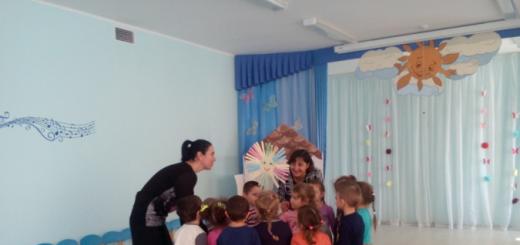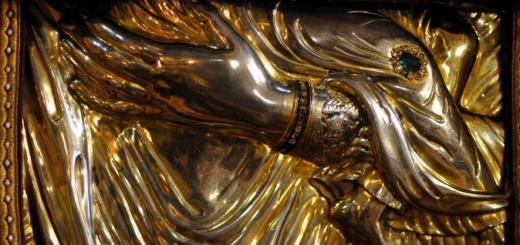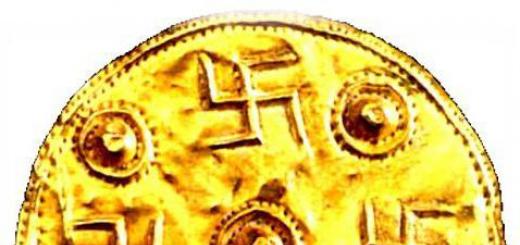"ABC book" of the 17th century
"In enlightenment alone we shall find a salutary antidote for all the ills of mankind." N.M. Karamzin.
In the 17th century in Russia, the culture of the new time was born. In the middle of the 17th century, public and private schools were created.
Private schools
The Code of the Stoglavy Cathedral of 1551 read: “In the reigning city of Moscow and throughout the city ... archpriest and senior priest and with all the priests and deacons, whenever in your city .. choose good spiritual priests and deacons and deacons married and pious ... able to use others , and there is a lot of literacy and honor and writing, and among those priests and deacons and deacons, commit them in the houses of the school, so that priests and deacons and all Orthodox Christians in every city give them their children for the teaching of literacy and for the teaching of book writing and church singing saltychnago and reading naloinogo ... "

A. Ryabushkin "School of the 17th century"
The teachers in the schools of the 17th century were clerics, for their work they received payment in products. The disciples visited them in the morning and in the afternoon. The children of people "of every rank ... and dignity, glorious and poor, rich and poor, even to the last farmers" studied.
Since the main teachers at that time were the clergy, it is natural that primary education in Russia was of a church nature. Classes began and ended with prayer. The education system thought out in this way harmoniously solved two problems - it gave the younger generation the basics of literacy and knowledge and brought it up in the spirit of Christian morality.
Fraternal Schools
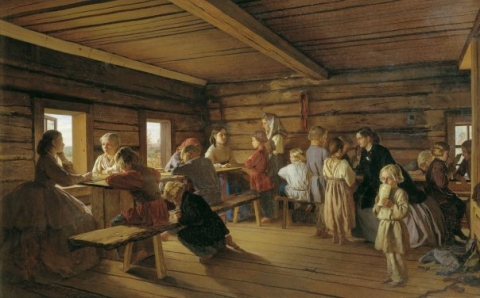
Morozov "Rural school"
But Russia already needed well-organized schools. Such were the schools formed by Orthodox brotherhoods, they were called “fraternal schools”. The oldest brotherhoods are Lvov, Vilna, Kiev, Mogilev, Lutsk, Pinsk, Orsha.
Children of all ranks were admitted to fraternal schools. The schools were maintained at the expense of the fraternities (that is, they were public). Although each school lived according to its charter, they had much in common.
In many ways, the organization of the school resembled the modern one: elders were appointed to help the teacher in maintaining discipline, on duty, issuing books, cleaning classes, and sometimes even replacing teachers.

B. Kustodiev "School in Moscow Russia"
Of the academic subjects - reading, writing, singing, counting, the foundations of religion, some information on sacred history, an idea of grammar, dialectics, rhetoric, music, arithmetic, geometry, astronomy of that time. The students memorized a lot and thus gained knowledge on the basics of versification, as well as samples of appeals to high-ranking officials and benefactors. In 1634, V. Burtsev's primer, a textbook very famous at that time, was published and then repeatedly reprinted. The primer cost one kopeck, which was cheap at the then prices. At the same time, the grammar of Melety Smotrytsky, a Ukrainian scientist, was published, according to which Mikhail Lomonosov also studied. At the end of the century, a primer was published by Karion Istomin, a monk of the Chudov Monastery of the Moscow Kremlin, as well as a practical guide for counting - the multiplication table - “Counting is convenient, by which every person who buys or sells can easily find the number of any thing.” During the second half of the century, the Printing Yard printed 300,000 primers, 150,000 educational psalters and books of hours. They also learned from handwritten books.
In the 60s. Priest Ivan Fomin, at his own expense, built a school in Barashy at the Vvedenskaya Church.
Epiphanius Slavinetsky headed the Greek-Latin school in the Miracle Monastery.
D.L. Mordovtsev studied the alphabet books (reading guides for children) of 1660-1679, which indicate that they can be considered the forerunners of modern textbooks and, at the same time, teaching aids for teachers. they contain teaching methods, rules for students, instructions on behavior in church, at school, at home and on the street.

"ABC book" of the 17th century
But still, fraternal schools could not compete with the Catholic ones. Therefore, there was a need to create a higher school. Such was the fraternal school in Kyiv - the Kiev-Mohyla Academy. This is the first institution of higher education in Ukraine. It was created by Metropolitan Petro Mohyla in 1632 on the basis of the School of the Epiphany Brotherhood (since 1615) and the school at the Kiev-Pechersk Lavra (1631).
Fedor Mikhailovich Rtishchev
F.M. played an important role in the formation of Russian schools. Rtishchev is a statesman, educator, philanthropist, who founded a number of hospitals, schools and almshouses, whom his contemporaries called "a gracious husband."
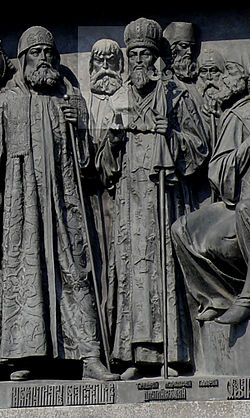
F.M. Rtishchev on the monument "1000th anniversary of Russia in V.Novgorod"
F. M. Rtishchev played a prominent role in the history of Russian education. Not far from Moscow, in the tract of Plenitsa, with the permission of Tsar Alexei Mikhailovich and the blessing of Patriarch Joseph, in the small church in the name of Andrei Stratilat that existed there, Fyodor Rtishchev built a church there in the name of the Transfiguration of the Lord and in 1648 founded a school monastery at his own expense. Thirty monks settled there, summoned by Rtishchev from several Little Russian monasteries. Soon, a scholarly brotherhood (Rtishchevo brotherhood) was formed at the monastery, which was engaged in the translation of books, and then a school was opened where those who wished were taught grammar, Slavic, Latin and Greek, rhetoric and philosophy. In 1685, the school, founded by Fyodor Rtishchev, was transferred to the Zaikonospassky Monastery and served as the basis of the Slavic-Greek-Latin Academy.
The historian V. O. Klyuchevsky wrote that Fyodor Mikhailovich Rtishchev belonged to those people who “from their historical distance they will not cease to shine, like beacons in the midst of the darkness of the night, illuminating our path”.
It is known that in 1685 there was a "school for teaching children" in Borovsk, near the trading square, and in Moscow, on Nikolskaya Street, a special building was built for the school. Later, a school was organized at the Printing House. When the school was opened, there were 30 students, taken from different classes, and then the number reached 232. Monk Timothy taught Greek at this school.

As already mentioned, the school founded by F. Rtishchev served as the basis for it.
It was founded in 1687. Initially, it was located within the walls of the Moscow Zaikonospassky Monastery. In 1814 it was transformed into the Moscow Theological Academy (transferred to the Trinity-Sergius Lavra, where it still exists).
There are 3 stages in the history of the academy.
1st stage (1687-1700) - the Hellenic-Slavic school of the Likhud brothers, who adhered to the Orthodox-Greek direction;
2nd stage (1700-1775) - Slavic-Latin Academy. This period is characterized by the influence of Western European philosophers (W. Leibniz and X. Wolf);
3rd stage - the predominance of Orthodoxy.
Until the middle of the XVIII century. teaching was in Latin. The purpose of the academy was to prepare educated people for the state and church apparatus; she performed the role of censorship of books of spiritual content and could carry out judgment on apostates from Orthodoxy. Only persons who had graduated from school were appointed to government positions (this restriction did not apply to “noble” children). Immunity was granted to the new educational institution: withdrawal from court of orders, excluding cases of a criminal nature; teachers and students were subject to the school jurisdiction, and the "guardian" (rector) - to the court of the patriarch. The Greek scientists Ioannikius and Sophronius Likhud, invited from Constantinople, became the leaders and teachers of the Slavic-Greek-Latin Academy. After 1694, when the Likhuds were removed at the insistence of the Jerusalem Patriarch Dositheus, their Russian students taught. In the Slavic-Greek-Latin Academy, which combined the features of higher and secondary schools, the subjects of the medieval scholastic school were taught: Slavic, Greek and Latin, grammar, piitika, rhetoric, psychology, physics, etc., as well as theology. The main place was occupied by the Greek language.
Professional education
Vocational education began to take shape in Russia in the middle of the 17th century with the advent of embassy, medical, and printing schools. For example, in the Printing School under the Order of the Printing Yard, founded in 1681, by 1684 194 people were studying. The school was at the same time an elementary school and a school for the training of printers of the Printing Yard.

